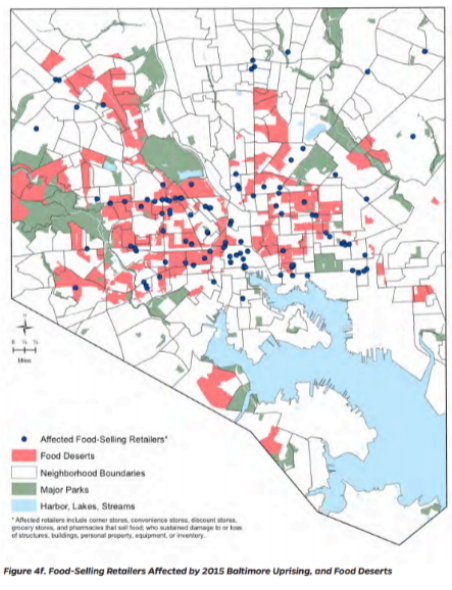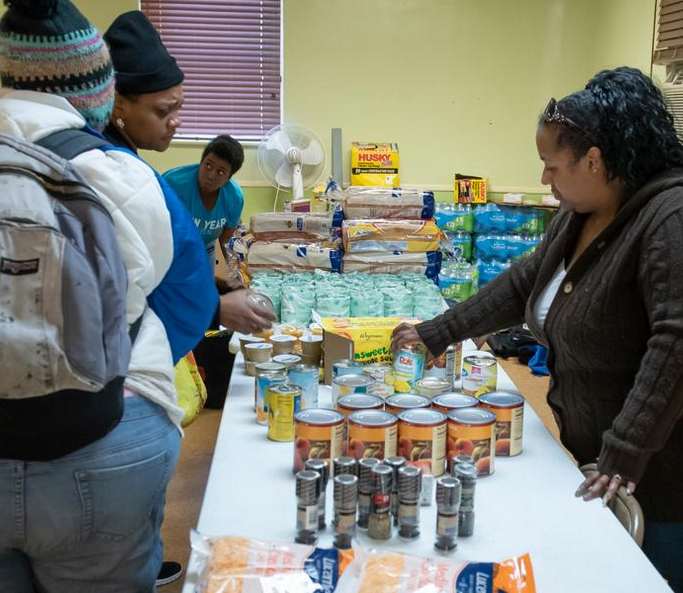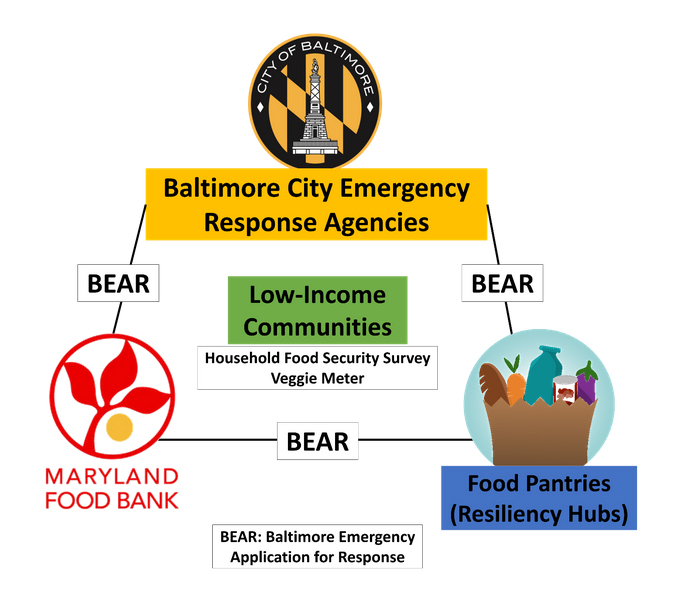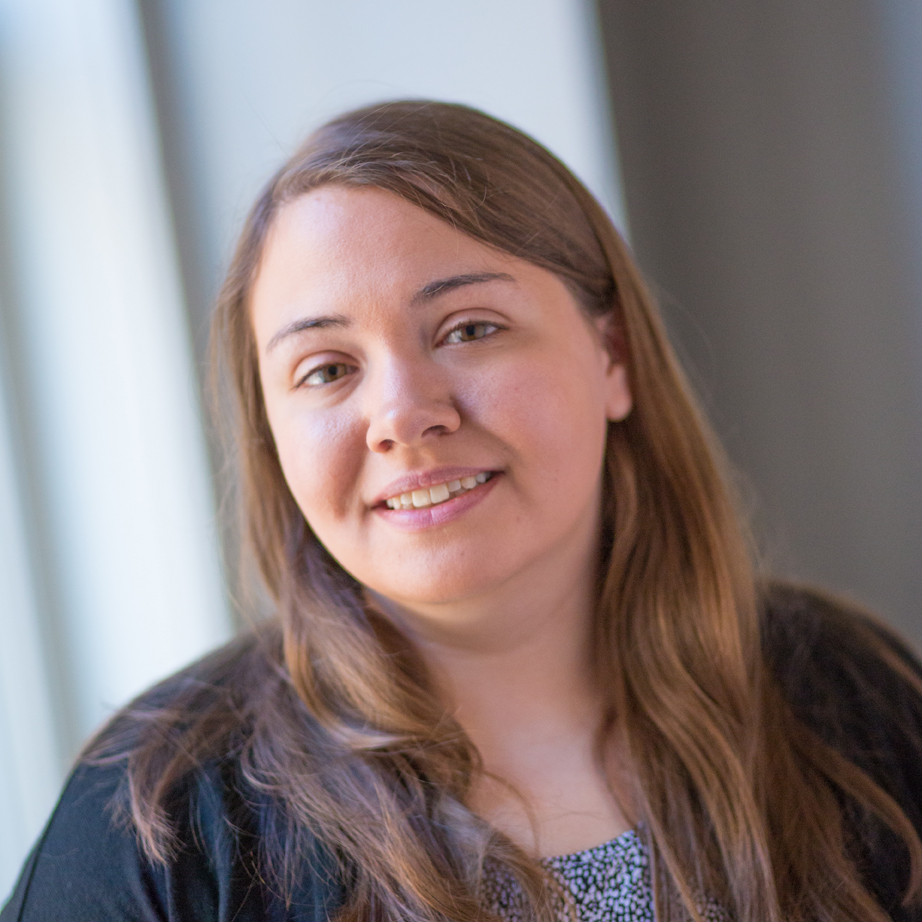Baltimore Emergency Application for Response (BEAR)
Overview
Identifying Technology-Based Strategies to Create Low-Income Urban Resiliency Hub Networks to Improve Disaster Resilience and Food Security in Baltimore City.
The Proposal
Partner larger food pantries/Resiliency Hubs with smaller food pantries with fewer resources to create emergency response networks that enhance access to healthy foods.
Validate Veggie Meter as an objective tool to quickly assess improvement in food safety networks with serum retinol measures, dietary assessment tools, and with food security measures.
Create and pilot a smartphone application to send feedback to the Maryland Food Bank and to Baltimore City emergency planners on the current inventory of participating Resiliency Hubs and food pantries and to notify these community organizations to coordinate an emergency response.
The Problem
- Communities with low household income and fewer resources are more vulnerable to the destructive effects of emergencies.
- Low-income households in Baltimore City that utilize food pantries have low access to fresh, healthful options.
- Baltimore City’s food resilience plan for emergency situations seems to be unclear.
- Food pantries and Resiliency Hubs in the city can be part of an emergency response.
- These community organizations have limited resources and low self-efficacy to respond to emergency situations (either as first response or during recovery).
- We lack simple, quick, objective ways to assess how well food pantries improve clients’ food insecurity.
1 Biehl, E., Buzogany, S., Huang, A., Chodur, G., & Neff, R. (2017). Baltimore Food System Resilience Advisory Report. Retrieved from Baltimore Resilience Report (pdf)
The Needs
Baltimore Needs Better Emergency Preparedness
- A network where:
- Baltimore City emergency response agencies can communicate with the Maryland Food Bank and other non-profits to coordinate first response and recovery efforts
- A system that identifies and tracks (over time) the most vulnerable residents, such as food insecure children and older adults
- Food pantries and Resiliency Hubs can directly communicate with Maryland Food Bank staff; share resources (volunteers, vehicles, storage facilities) and best practices with other community organizations
- Reliable and equitable healthy food availability:
- Even when city transit is down
- Equipped to accommodate special dietary needs
- Greater coordination between organizations:
- During the Freddie Gray uprising in 2015, lack of coordination and communication left non-profits unable to get food to those who needed it most
- Better understanding of current emergency resources and/or lack of resources
The Idea
BEAR (Baltimore Emergency Application for Response) will be a smartphone application that:
- Sends data to Baltimore City emergency response agencies and the Maryland Food Bank on the current inventory and client needs of food pantries and Resilience Hubs
- Allows Baltimore City emergency response agencies to send notifications to Maryland Food Bank staff, food pantries and Resilience Hubs during emergencies to coordinate efforts in a specific neighborhood
- Connects food pantries and Resilience Hubs to other similar organizations in their area
- Provides a communication platform with Maryland Food Bank
- Tracks client fruit/vegetable consumption via Veggie Meter, households food insecurity via USDA’s Household Food Security Survey, and self-reported dietary needs
- Has a social network/connectivity function to help create relationships between community organizations
- Outlines emergency response guidelines even when offline
- Uses redundant communication strategies to provide backup alternatives during emergencies
- Can be utilized even when power is out or the phone lines are disconnected, via satellite internet connection
Team
Co-Investigators:
Team and Student Collaborators:
Department of International Health Program in Human Nutrition











